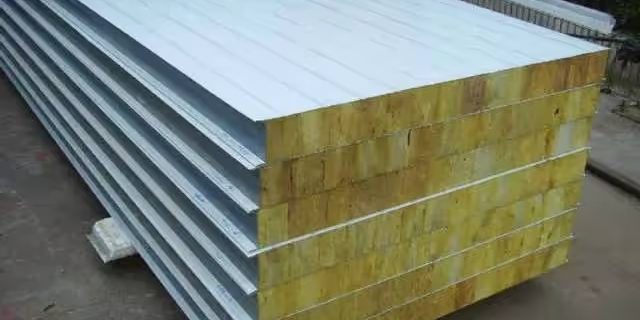Question 1: What are the advantages of rock wool in building insulation and fire prevention? What are the issues to pay attention to when doing well in external wall insulation and fire prevention?
Building fires are a very scary thing that no one wants to see. Rock wool itself is made of silicate fiber inorganic material, which is non combustible. Rock wool has insulation and belongs to Class A fireproof material. When using rock wool fire insulation boards, not only does it ensure the insulation effect, but also the fire performance meets the fire protection standards.
To do a good job in fire prevention of external wall insulation, the following points need to be done well: one is to strictly implement various fire regulations and fire protection systems. Choose good insulation materials, take fire prevention measures in the initial stage of using insulation materials, and monitor the construction process in the intermediate stage of using insulation materials to prevent the possibility of various fires; After the insulation material is made into an external wall insulation system, the insulation system should be properly used and fire prevention measures taken.
Question 2: Does using rock wool products with good thermal conductivity and fire resistance mean that the requirements for tensile strength, water absorption, and durability must be reduced?
The high-quality rock wool produced in China can fully meet all the requirements in terms of tensile strength, water absorption, durability, and insulation performance, and belongs to Class A non combustible materials. In most applications, the insulation performance of rock wool can be comparable to that of polystyrene board, and even exceeds that of polystyrene board in some applications.
Question 3: What is an external wall insulation system? Can rock wool be suitable for external wall insulation composite systems
The external wall insulation system refers to an engineering practice that uses certain fixing methods (such as bonding, mechanical anchoring, spraying, pouring, etc.) to fix insulation materials with low thermal conductivity (good insulation effect) with the building wall, increase the average thermal resistance value of the wall, and achieve insulation or thermal insulation effect.
The rock wool exterior wall insulation system has the advantages of low thermal conductivity, good breathability, and high combustion performance level. It can be applied to energy-saving insulation projects for new, expanded, and renovated residential and public building exterior walls, including exterior wall insulation, non-transparent curtain wall insulation, and fire isolation belts for EPS exterior insulation systems. To be used in conjunction with insulation materials with combustion performance not reaching Class A, in order to improve the fire protection and fire prevention functions of the building’s exterior walls. Rock wool is an excellent external wall insulation composite system insulation product. Moreover, due to its non combustible performance, rock wool is also a building fire safety solution and is considered the preferred material and solution for high-rise buildings. The flammability of foam insulation products will cause great risk and damage to people and property, so it is not allowed to use this material in high-rise buildings in Europe and the United States.
Question 4: In Europe, such as Germany, does rock wool only have a small market share in all applications of external wall insulation composite systems?
In Germany, for high-rise buildings above 22 meters, the market share of rock wool in external wall insulation composite systems is 100%.
Question 5: What is the difference between rock wool and slag wool?
Rock wool and slag wool belong to different products. The main component of slag wool is slag, which has the characteristics of high slag ball content, low melting point and Acid dissociation constant. Therefore, the thermal conductivity of slag wool is high, and it will have serious thermal shrinkage in case of fire.
Slag cotton is usually not suitable for projects with fire protection requirements. Moreover, slag wool cannot meet the application requirements of external wall insulation composite systems, so it should not be applied to external wall insulation composite systems.
Question 6: Will rock wool cause harm to human health?
Of course not. Some organizations, such as the World Health Organization, have conducted extensive research on whether rock wool fiber is carcinogenic, and the results clearly indicate that rock wool fiber is not a carcinogen. The research result is that “thermal insulation Glass wool, continuous glass fiber, rock wool and slag wool cannot be classified as human Carcinogen (Category 3)”. Research on the carcinogenicity of rock wool is well known, and these research reports are publicly available. Furthermore, in terms of health issues, we are not aware of any limitations on the use of rock wool.
It is worth mentioning that HBCDD is a PBT substance (persistent, Bioaccumulation and toxic substance), which is used to make certain foam products reach Grade B1. The European Chemical Agency has earlier decided to list HBCDD as a substance requiring special attention (SVHC). From production to installation and dismantling, mineral wool (including rock wool) can be excluded as harmful substances.
Question 7: Will the production process of rock wool consume a large amount of energy and generate a large amount of emissions?
All or most of the production waste in modern factories is recyclable, and the remaining small amount of waste will be reduced to the lowest level after treatment. The energy consumption saved by a unit of rock wool in its use is one hundred times that of its production. Manufacturing 1 kilogram of rock wool consumes approximately 20MJ of energy, while manufacturing 1 kilogram of polystyrene board consumes at least 85MJ. The raw materials for manufacturing polystyrene boards are mainly mineral fuels such as oil and gas, while the production of rock wool only requires the use of very ordinary rocks (basalt), with almost unlimited available reserves.




